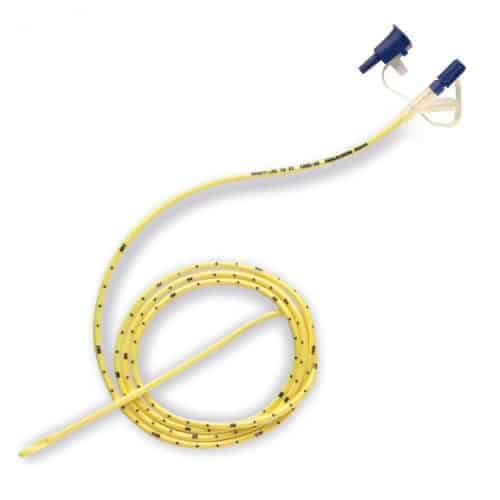Would Vodka Prevent a Feeding Tube Hole From Healing
Enteral nutrition is also known as tube-feeding, which is using an external tube to send liquid nutrients to a patient's stomach, skipping the mouth and throat.
Trained medical personals such as nurses either surgically insert a feeding tube through the skin into the stomach or bowel or insert through the nasal cavity to the stomach.
The caretaker or the patient himself will pour liquid food mixture via an opening port on the free end of the tube for feeding.
Feeding tubes usually cause no pain and are easily concealed under loose clothing. With proper care, tubes usually last around 6 months before replacement is required to reduce the chances of infection.
Why do some patients need tube-feeding or enteral nutrition?
Patients have to resort to tube-feeding as they may not be able to use their mouth or throat to accept food into their bodies. Disease, trauma, or premature birth may inhibit an individual's ability to ingest food by mouth (or throat). For their body to get nutrient and recover from the injuries, enteral tube feeding is necessary for these patients.
It can be an effective method of delivering sufficient calories and nutrients to individuals such as cancer patients or burn victims, among others.
What milk feed is suitable for use in tube-feeding?
There are numerous milk feeds with nutrition that is suitable for patients to sustain short term or long term. There are different established brands by Abbott or Nestle, such as Ensure milk series, Glucerna series, Jevity, Boost Isocal liquid, Resources 2.0, Resource Fruits, etc. All of these formulae is usually taken orally as a drink. They can also be used for tube feeding if needed by the user.
There are also many milk nutrition formula that is specially designed for tube-feeding. For example, Boost Isocal by Nestle is a specially designed liquid formula for meeting the daily energy and nutrient requirements of an individual via tube-feeding.

The most common side effects during enteral feeding include diarrhea, constipation or nausea, and vomiting. Symptoms often occur when beginning tube-feedings as the body adjusts to the formula.
Here are some unpleasant side effects from tube feeding:-
- dehydration
- diarrhea
- constipation
- perforation tears in intestines
- peritonitis or infection in the abdomen
- obstruction of the feeding tube
- displacement of the feeding tube in the body
- Skin infection around feeding tube entry point in the body
There can be other potentially more serious side effects such as pulmonary aspiration in which liquid enters the trachea or lungs, dehydration, abnormal blood sugar levels and high/low levels of vitamins and minerals. Do check with your doctor or nutritionist for consultation.
Feeding tube material, which is more preferred by patients or doctors?
Feeding tube or nasogastric tubes tend to be made out of these materials:-
- polyurethane
- silicon
- latex
- polyvinyl chloride (PVC)
It is important to keep Boost Isocal or all milk solutions refrigerated when not in use and opened, room temperature solutions should be used within six to 8 hours to prevent potentially dangerous bacterial growth. Proper hydration is important to prevent dehydration and unwanted side effects as well as other complications.
To prevent aspiration, feedings should always be done with an individual sitting up at an angle of at least 30 degrees and this should continue 30 to 60 minutes after feedings.
Source: https://seniorcare.com.sg/tube-feeding-aspirations-complications-and-precautions/
0 Response to "Would Vodka Prevent a Feeding Tube Hole From Healing"
Postar um comentário